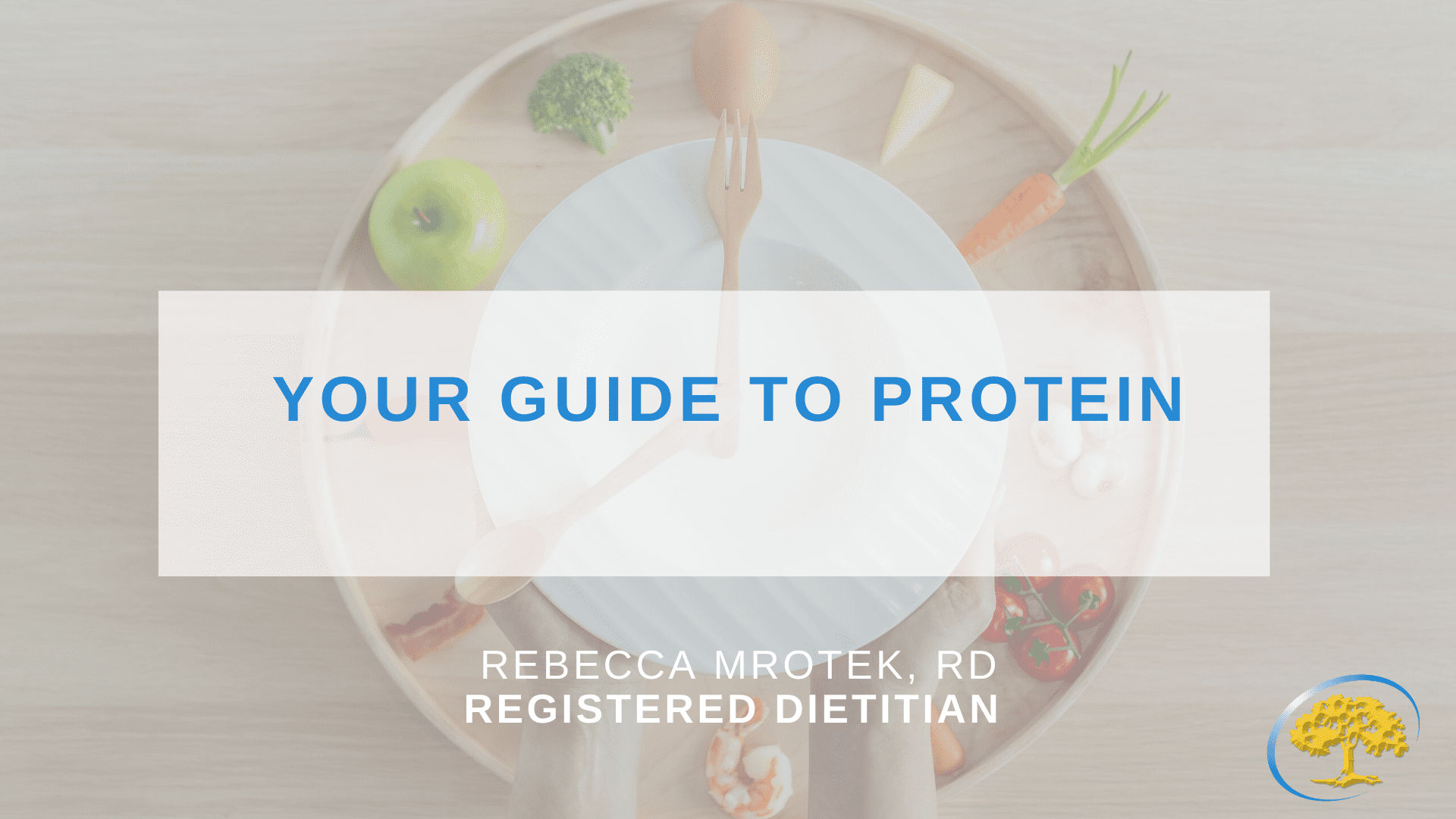
Posted 3 years ago
Your Guide to Protein
Every diet, whether having cancer, going through active treatment, living an active lifestyle, or living day-to-day requires protein to build and preserve muscle mass. Protein also helps promote healthy cells that assist with fighting infections and blood clotting. The average sedentary person requires .8 grams of protein per kilogram of body weight, this can increase or decrease depending on any illness or activity level. If highly active or going through treatment, needs rise to 1.2-1.5 grams per kilogram of body weight, and can be higher in some instances. Protein is a useful food group to help maintain satiety and decrease total caloric intake. If trying to lose weight, it is beneficial to make this a larger part of your meals. On the other side, if you are trying to maintain or gain weight, it can be hard to consume enough protein. It is very common to have a poor appetite during treatment that can make it extremely difficult to reach your needs. Taste changes and nausea are some of the biggest contributors to poor protein intake. Here are some tips that we share with patients to maximize their protein intake:
- Always keep a protein snack on hand: jerky, cheese sticks, and trail mix are all good options
- Eat more during the times you are hungriest
- Eat small, frequent meals. Trade your normal 3-meal a day schedule for 5-8 smaller meals throughout the day. Incorporate a protein food at every snack to maximize your intake.
- Set the scene for a nice meal. Sometimes it’s all about the mood. Set the table, light a candle, and make the plate look appealing
- Stop drinking fluids 30 minutes-1 hour before a meal to allow for higher intake of food
- Try new foods. The older we get, the more set in our food choices we become. It is very common for taste changes to make our beloved foods taste very bad or have no taste at all. If you are experiencing these taste changes, try experimenting with new foods you may surprise yourself.
- Drink your protein. There is a surplus of supplements available on the shelves making it difficult to navigate the good, better, and best of products. A good rule of thumb- if you have a poor appetite, find a high calorie and high protein beverage (over 250 calories and over 20 grams of protein); but, if you have a good appetite and only want to increase your protein, look for a lower calorie option with high protein (under 200 calories and over 20 grams of protein).
- Make smoothies. If the idea of a meal is daunting, make a smoothie out of a protein drink and add your fixings. Now, you just made a high protein and high calorie meal replacement in less than 10 minutes.
- Increase movement and activity. Exercise will help increase your appetite, but also make sure it is done in a safe environment.
Ideally, most of your protein will come from plant sources. These contain the least amount of saturated fat and are usually high in fiber. High amounts of saturated fat from animal meats are linked to a higher risk of cancer and cancer reoccurrence, heart diseases, and strokes. Therefore, we encourage most of your proteins come from plant sources like beans, legumes, and lentils to name a few. By no means should you stop eating animal meat if this is your main source of protein, just focus on eating leaner cuts of meat like white meat chicken without the skin, Greek yogurt, fish, and turkey, as these will have less saturated fat than foods like bacon, steak, and ground beef.
With any diet, it is important to include a variety of foods. If you struggle getting enough protein in your diet or are unsure of the right amount for your lifestyle, feel free to reach out to a dietitian and we can curate a diet for you!
